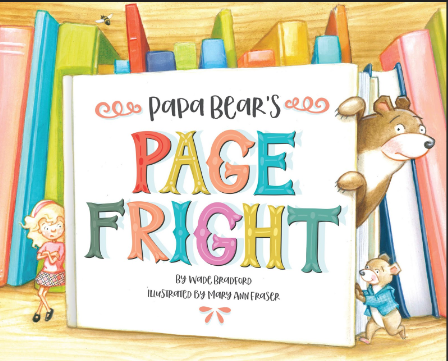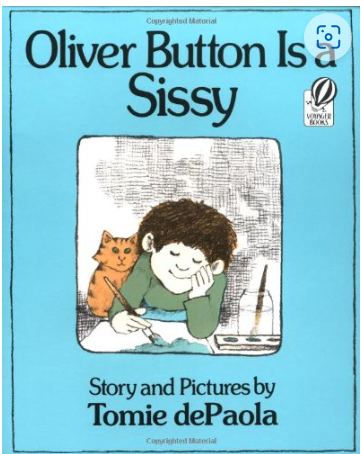What Inspires Me? Stage Fright Jitter Busters
The Season of Firsts” aka “Stage Fright” season has begun…again. I’m a zillion years old and I still get freaked out stepping into new situations. Even when I know exactly what to expect. Say, at the fundraiser I attended Saturday night. The fundraiser I was excited about for an organization I absolutely believe in, The Hampton Theatre Company. It was a lawn party with live music, lovely food, chilled libations…at sunset! I even felt good in my dress—and still as I arrived the butterflies set to fluttering…“Scaredy Mimi!” . . . Then the cute butterflies grew to moths and then bats hammering at my insides “Run for it!”
If that still happens to me, at the ripe old age of zero-dark-sixty, how could anyone expect that our children would not have First Day, First Time, New Place-People-Thing Jitters?
We all need tools and practice to combat stage fright. Here are mine:
How to Combat Stage Fright aka New Experience Jitters 4-Step Plan:
1. Do not ask “Are you nervous?” Of course, they/we/he/she is nervous. Duh! And if we/he/she wasn’t then, we/he/she sure is now.
2. Talk about “Stage Fright” beforehand. Share your own experience. This is not the time to go all Superhero, this is the time to be vulnerable and honest. Truth is even the most seasoned performers get jitters aka butterflies before going on stage. Part of those jitters is excitement. Part of it is fear of failure. Some say when a performer stops feeling jitters or excited before an event, it’s time to quit. That “jittery” feeling is also adrenaline rushing in. Nervous is normal.
3. Make a Plan. If you are going together, think Team! Plan how you’re team will enter the new situation. What you’ll do first? If one person is less jittery—lucky them—then agree that that person will take the lead—with the only expectation being the other team member follow. And make a plan for when and how and if and what the other person will be expected to do.
If one person, a child perhaps (or me Saturday night) are going in alone, make a plan for exactly what or how that person will enter the scene. For example, here’s my plan:
Plan A-D for Entering a New Situation:
A. Look for a familiar face. Scan the room to see if anyone I know is in the room.
B. Look for my seat or where I belong. If there is no seat to look for, then look for the bathroom. It gives me something to do right away. (And check that my tags are tucked, etc.)
C. Head up, look for somewhere interesting to look: live music, flowers, art, the décor. Look interested and you will be more interesting.
D. Look for someone who looks as miserable as I feel and do one of the following: go over to that person/talk to that person/at least smile at that person.
By the time I’ve done A-D, I will be feeling more comfortable and/or something will be happening. At the very least, I will no longer be the new person in the room. If needed repeat A-D. Repeating A-D over and over until it works. Repeating Plan A-D will work—or it will be time to make a graceful exit…
4. The Absolutely Best Stage Fright First Time Jitters Buster—Read about Stage Fright!
Reading books about characters overcoming stage fright is fun and funny. Best, they are chock full of colorful ways to overcome stage fright. Maybe even better than my 4-step plan—definitely with fewer trips to the bathroom.
Scaredy Mimi’s List of Best Picture Books about Squelching Stage Fright:
Norman, One Amazing Goldfish by Kelly Bennett and Noah Z. Jones (Candlewick Press) (Glugggggg! Of course this is #1, right)
Norman is one amazing goldfish! His owner knows Norman is sure to dazzle the crowd at Pet-O-Rama with his circles, bubbles, and flips—even though some kids don’t think a goldfish is a good pet. But when Norman is finally on stage, he freezes up and hides behind his plant. Poor Norman! Luckily, his owner plays a familiar song on the tuba, helping Norman to relax and show the crowd how amazing he really is. The popular stars of Not Norman return in a warm and wryly funny new story about being there for your fishy friend when he needs you most.
Chicken Lily by Lori Mortensen and Nina Victor Crittenden (Henry Holt & Co.)
Chicken Lily may be a lot of things--a careful colorer, a patient puzzler, and a quiet hide-and-seeker (she never made a peep!)--but brave has never been one of them. That's why, when a school-wide poetry jam is announced in class, Lily is terrified. Will she sound like a bird brain? (Cover Image above)
Papa’s Page Fright by Wade Bradford and Mary Ann Fraser (Peter Pauper Press)
This is the story of a little girl named Goldilocks. Well, that's what it's supposed to be, but there's a problem. When Papa Bear discovers he's inside of a book and there are readers out there looking at him, he gets very nervous and forgets his lines. Poor Papa Bear . . . he has Page Fright!
Oliver Button is a Sissy by Tomie de Paola (HHMH Books for Young Readers)
A Classic! A little boy must come to terms with being teased and ostracized because he’d rather read books, paint pictures, and tap-dance than participate in sports.
The Piano Recital by Akiko Miyakoshi (Kids Can Press)
It's the day of Momo's first piano recital. As she nervously waits for her turn to play, she tells herself, "I'll be okay … I'll be okay …" Then she hears a voice nearby, also saying, "I'll be okay. . . I'll be okay. . . " It's a mouseling! And the little mouse is nervous about her first performance, too.
Second Banana by Keith Graves (Roaring Brook Press)
What happens when a Top Banana, star of the circus, gets hurt and Second Banana has to stand in his place.
And for early readers who want to figure it out themselves:
Splat the Cat Sings Flat by Rob Scotton, Chris Strathearn, and Robert Eberz (I Can Read series, Level 1, HarperCollins)
When Splat's teacher announces that the whole class is going to sing for their parents on Parents' Night, Splat is worried: he's afraid to speak in public, much less sing in public!










